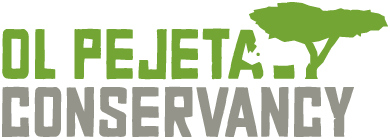

WildAid: Ol Pejeta Conservancy
When the buying stops, the killing can too.
Ol Pejeta Conservancy works to conserve wildlife, provide a sanctuary for great apes, and to generate income through wildlife tourism and complementary enterprise for reinvestment in conservation and communities. The 90,000 acre conservancy in Kenya is home to the largest population of black rhinos in East Africa as well as some of the largest predator densities in the country.
In 2018, Bently Foundation awarded WildAid with a $115,000 grant to support three projects at Ol Pejeta Conservancy.
Habitat Regeneration: Acacia trees are crucial to biodiversity across all 5 main types of habitat here, but the high concentration of elephants, impala and antelope often destroy the trees, which is reducing acacia numbers. Two exclusion zones created using sophisticated fencing will protect 180 acres from large ungulates while the trees have time to establish.
Human Wildlife Conflict Mitigation: 75,000 people live and raise crops near Ol Pejeta, and conflict often arises when large animals enter populated areas, especially when they raid crops or attack livestock. Human Wildlife Conflict is actually a more common cause of unnatural death for elephants and large predators than poaching. Ol Pejeta has an emergency hotline for farmers and, when called, send a small team of rangers on motorbikes to intervene using non-lethal deterrents. In areas with persistent predation problems, they set humane traps and relocate animals. This grant funded the construction of two traps and purchase of a new motorcycle.
Rhino Habitat Expansion: The black rhino population has grown so dramatically here that to support their numbers, Ol Pejeta is partnering with Kenya’s government to manage an additional 20,000-acres of habitat. A new 40-km, solar-powered fence around the perimeter will ensure the safety of rhinos and numerous other animals that make use of the newly-protected Mutara landscape.
Photos 2, 3 & 8-11 courtesy of Ol Pejeta Conservancy.